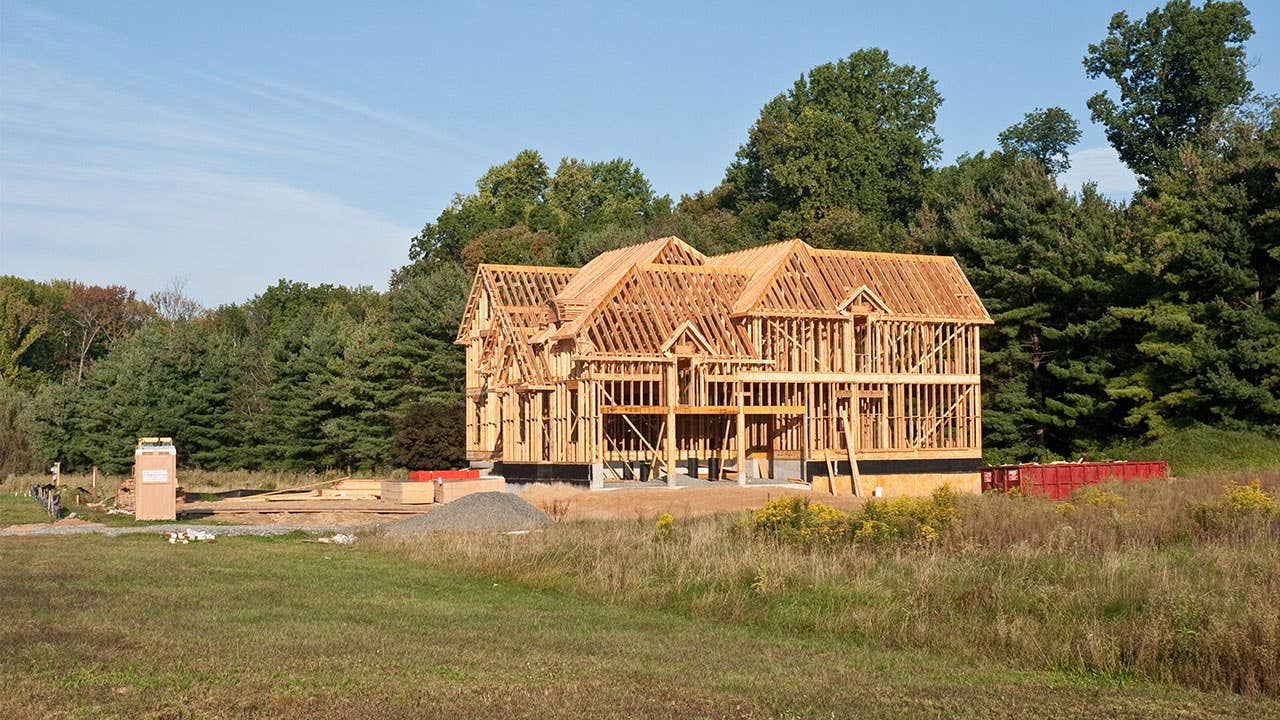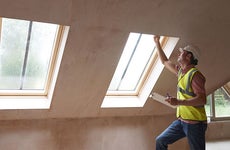Buying a new construction home? 5 mistakes to avoid

The Bankrate promise
At Bankrate we strive to help you make smarter financial decisions. While we adhere to strict , this post may contain references to products from our partners. Here's an explanation for .
In today’s high-interest-rate environment, many homeowners who might prefer to relocate are instead staying put. In fact, a June Redfin study showed that the vast majority of homeowners are locked in at mortgage rates below 6, 5 or even 4 percent. It’s no wonder they’re in no rush to sell — why give up a rate that low when, to buy a new home, you’d have to pay close to 7 percent?
This has created an extremely limited inventory of existing homes for sale, which means many buyers can’t find a resale home that suits their needs (or their budget). If that situation sounds familiar to you, new construction can be an appealing option.
Brand-new homes offer enhanced energy efficiency, amenities and layouts more suited to modern lifestyles, plus the potential to customize spaces that you don’t get with a resale. But if you’re not careful, costs and expectations can spiral out of control. The good news is that following these tips for buying new-construction homes can save you money — and hassle.
There are many dos and don’ts of buying new construction. Here are five costly mistakes to avoid when buying a newly built house.
1. Don’t assume you can’t negotiate with the builder
- As with much in real estate, many things can be negotiated with builders.
The top myth buyers of new-construction homes tend to believe is that builders won’t negotiate with them on price. That’s just not true, says Kerron Stokes, a broker/Realtor with RE/MAX Leaders in the Denver area.
“You can negotiate price, lot lines, loan fees and other items,” Stokes says. “A builder may say no, but if you don’t ask, you don’t know the answer.”
Hiring a real estate agent who specializes in new construction can give you extra confidence in negotiating with builders. Also, hiring an agent costs you nothing as a new-construction buyer; builders typically pay the agent’s commission from their marketing budgets, Stokes says.
2. Budget for items not included by the builder
- Be sure you understand what is included and what isn’t.
New builds are blank slates. For instance, many new homes don’t come with landscaped yards; you get that big-ticket honor after you move in. And if you buy in a development with a homeowners association, you might have a limited window to put down grass or plant trees, which can cost thousands of dollars.
Read your contract and the HOA rules carefully, so you can anticipate and budget for these expenses as early as possible. Nothing rains on a new homeowner’s parade like getting a scolding HOA letter pointing out something you failed to do. Even if your home won’t be finished for months or more, get estimates for the items you’ll need to pay for and put money aside specifically for those projects.
Note that new homes often don’t come with basics like window coverings, toilet paper holders and towel racks, or sometimes even light fixtures. Clarify what is and isn’t standard with your new home beforehand, so there are no surprises once you move in.
3. Don’t go with the easiest lender option
- You’re not obligated to use your builder’s preferred lender.
Many large builders have in-house mortgage lenders or preferred companies they work with. These may or may not offer competitive rates and terms. If you don’t shop around for the best lender, you won’t have a basis for comparison.
New-construction buyer Chyrise Harris is glad she didn’t make this mistake. She was preapproved with an outside lender and was keen on sticking with that company to buy her new home in Denver’s Stapleton neighborhood. But her builder’s preferred lender won her business with a better customer experience. “Knowledge is power, but if you don’t have anything to compare your experience to then you don’t know if you’re getting the best service,” she says.
When in-house and outside lenders compete for your business, you gain more leverage to negotiate loan costs or interest rates, says Stokes, who was Harris’ real estate agent.
For example, he advises looking carefully before accepting incentives offered by a builder’s lender — they don’t always save you money. “If a builder’s lender says, ‘We’ll give you $15,000 in incentives if you choose us,’ but an outside lender charges a quarter of a percentage point less in the interest rate over the life of the loan, that $15,000 incentive may wind up being more expensive in the long run,” he says. “You want to rate-shop for your loan throughout the entire build process.”
4. Be aware of the builder’s warranties and timelines
- Know what’s covered and what the delivery times should be.
When you buy a new-construction home, there are two types of builder warranties you’ll hear about: implied and express.
Implied warranties cover potential defects in workmanship that impact a new home’s habitability, livability and safety, based on local building codes and standards, says David Jaffe, vice president of legal advocacy at the National Association of Home Builders. Implied warranties tend to be vaguely worded, and they usually have a 10-year liability cutoff period for builders, he adds.
Some builders offer an express warranty, which has more precise wording on what is covered and cutoff times for varying parts of a new build. “An express warranty spells out the problems and remedies a builder is responsible for, as well as the duration of the warranty and a mechanism for disputing issues,” Jaffe says. “Builders live and die on their reputation, so they don’t want to get into long, drawn-out legal battles; this type of warranty provides more defined terms.”
Sometimes, builders ask buyers to waive their rights under an implied warranty when an express warranty is offered, so it’s important to read all warranties closely. Enlisting a real estate agent or attorney to review them, as well as the purchase contract, may help you avoid unscrupulous builders, Jaffe says.
Builder warranties are not a blanket guarantee for all types of defects or problems with a new home. Jaffe says they typically do not cover the following:
- Products covered by a manufacturer’s warranty (such as appliances)
- Damage caused by ordinary wear and tear
- Defects caused by lack of maintenance or neglect by the homeowner
- Defects in items installed by homeowners or contractors other than the builder
- Damage caused by natural disasters
Beyond reading the fine print of a builder’s warranty, make sure you understand their timeline on the completion of your new home as well. The exact times will vary based on the builder. Make sure yours lays out a detailed timeline for you, so that you can follow along — and hold them to it.
5. Avoid upgrades that won’t increase value
- Don’t shell out for add-ons that won’t recoup their cost.
One final mistake to avoid: Don’t get caught up in customization. Options and add-ons can seem limitless when you walk into a builder’s showroom. But before you go on an upgrade spree, it’s wise to consider which ones will boost the home’s value rather than merely making it look nicer, Stokes says.
“There is always a cost associated with upgrades, and some will help you realize value more than others,” Stokes says. For example, upgrading to quartz countertops from laminate, or from linoleum flooring to hardwood, are safe investments, he says — but if you opt for the top level of cabinets that costs an extra $10,000, you’re unlikely to recover that value at resale.
Another thing to consider is the cost difference between a builder upgrade versus hiring your own contractor to do the work later. Harris, the Denver buyer, had the option to include an air conditioner in her new home. She saved $1,000 by having the unit installed after she moved in rather than adding it to her construction tab, she says.
Bottom line
Buying a new construction home offers a lot of perks. But there are plenty of pitfalls as well, so buyers should pay close attention every step of the way, and enlist the help of an expert when necessary. Carefully consider all the pros and cons of new construction before signing on the dotted line for your shiny new home.
Related Articles

5 things to know before you tackle an expensive outdoor renovation


Home equity hazards: The risks of tapping into your property’s value
